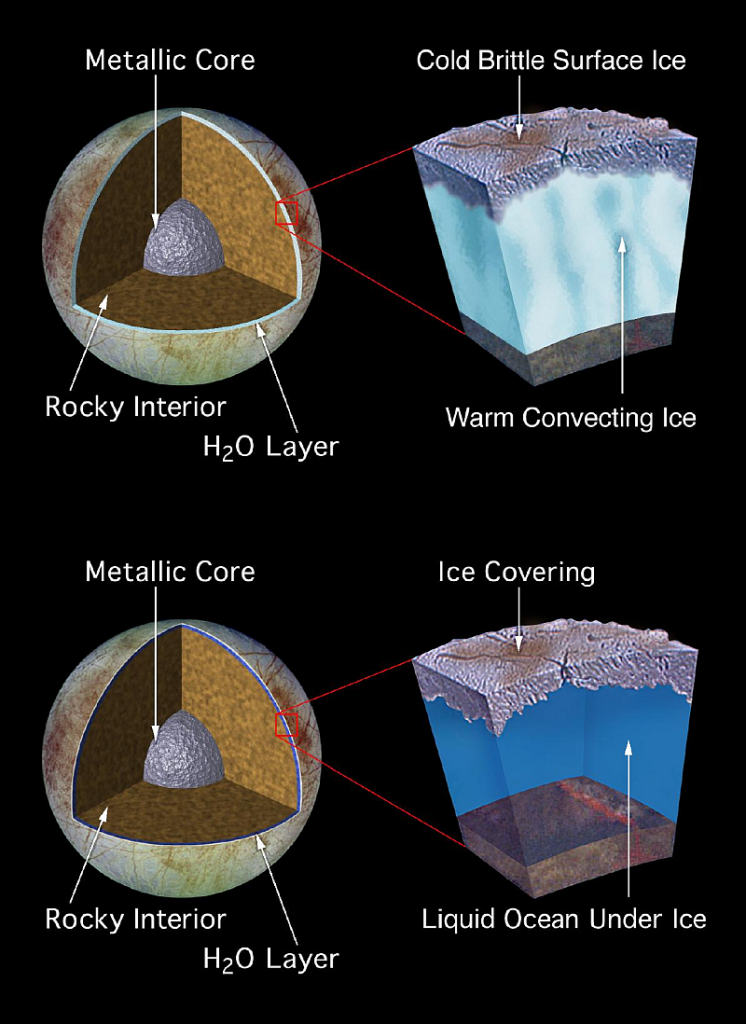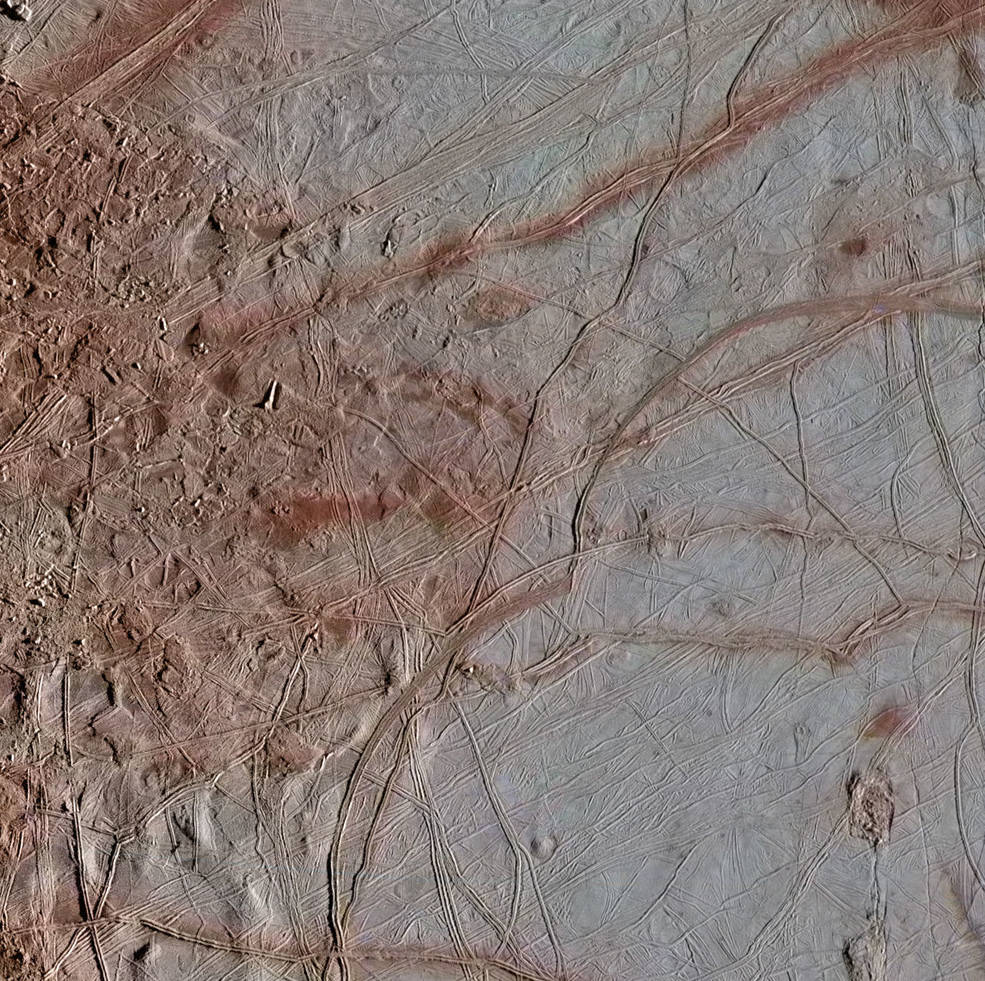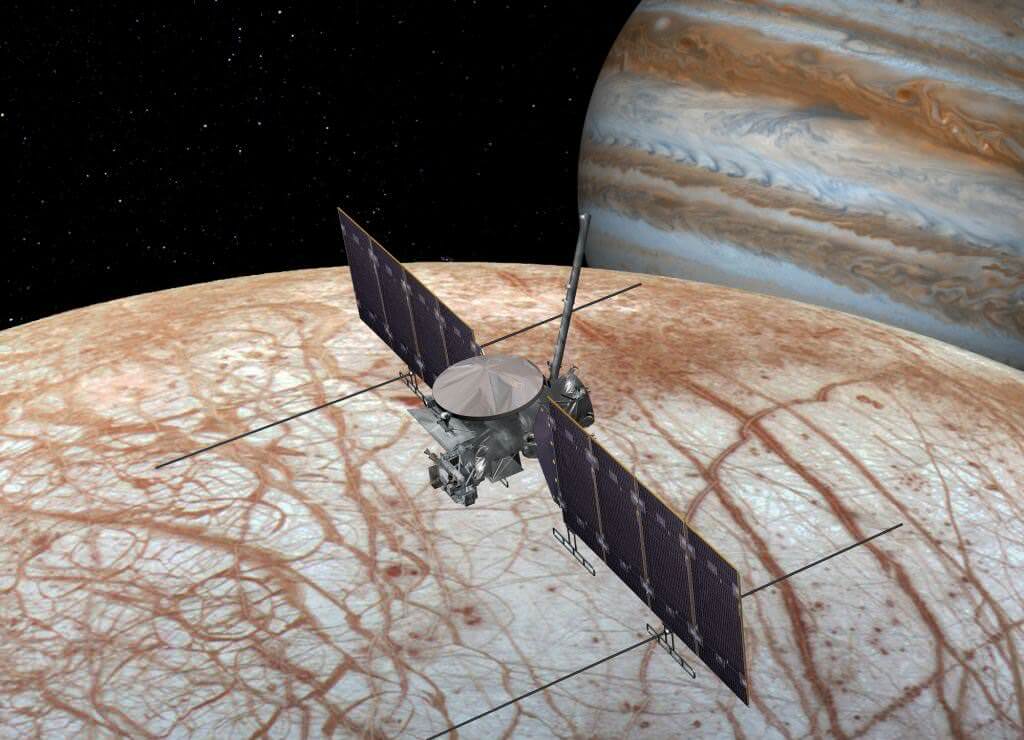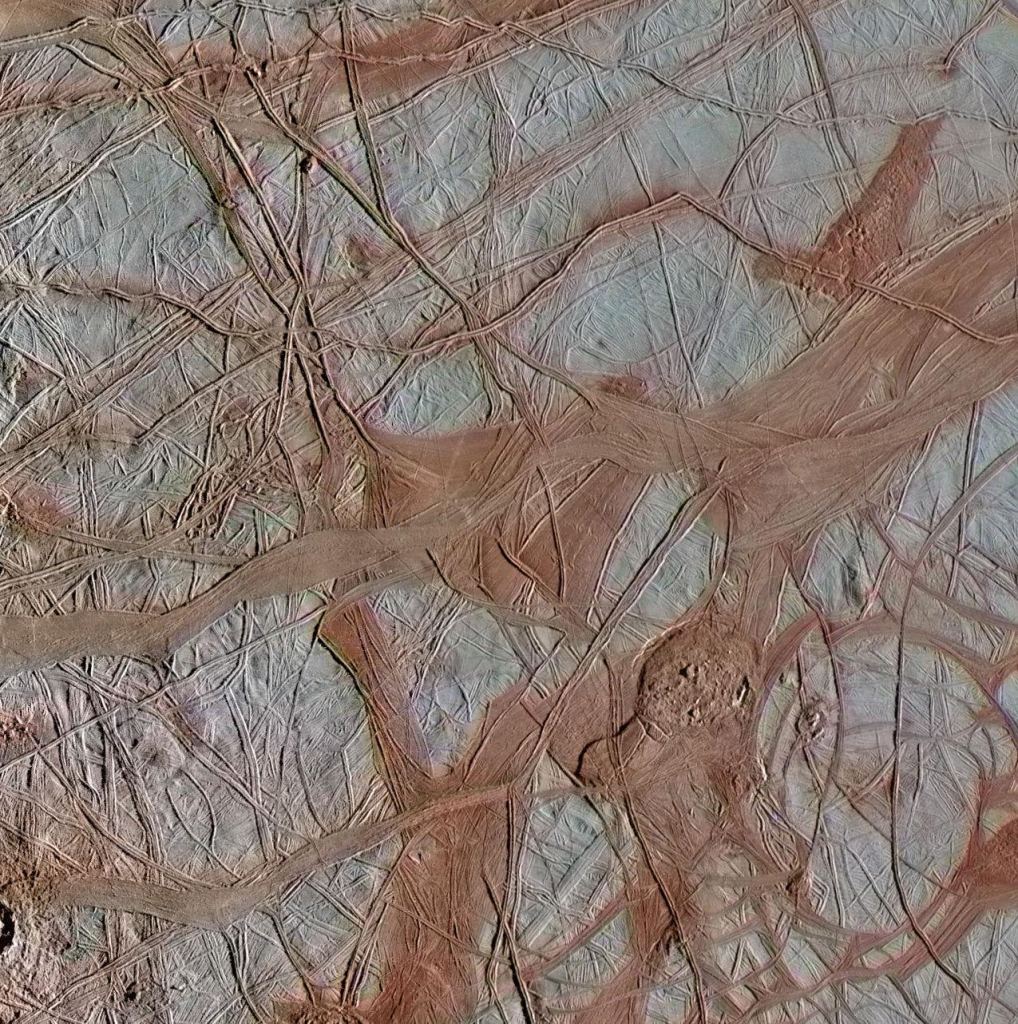At first glance, Jupiter's moon Europa doesn't seem much like Earth. It's a moon, not a planet, and it's covered in ice. But it does have one important thing in common with Earth: a warm, salty ocean.
Now there's even more evidence that Europa's sub-surface ocean is habitable.
Scientists at NASA have developed a new model that supports Europa's ability to support life. They presented their work at the 2020 Goldschmidt Conference, an annual conference on geochemistry and similar topics. It's put on by the European Association of Geochemistry and the Geochemical Society.
"We believe that this ocean could be quite habitable for life."M. Melwani Daswani, Lead Author, JPL.
The work is titled " Evolution of volatiles from Europa’s interior into its ocean." The authors are M. Melwani Daswani and S. D. Vance, from the Jet Propulsion Laboratory. Their work hasn't been peer-reviewed yet.
Europa is one of Jupiter's Galilean moons, the smallest of the four. Its brethren Ganymede and Callisto may also host sub-surface oceans, while the fourth moon, Io, does not.
Europa's ocean is buried beneath a frozen crust approximately 10–30 km (6–19 mi) thick, and liquid ocean underneath that may be 100 km (62 miles) thick. The likely source of heat for this liquid is tidal flexing due to Jupiter's monstrous mass, and Europa's orbital resonance with the other Galilean moons. The evidence for this ocean stretches back to the Voyager and Galileo spacecraft.
This new research presented at the Goldschmidt Conference suggests that this sub-surface ocean formed endogenously. That means that it formed by breakdown of water-containing minerals due to either tidal forces or radioactive decay. That's opposed to an exogenous ocean like Earth's, which was likely delivered to Earth by comets and/or asteroids.
This work is primarily based on data from the Galileo mission, which arrived at Jupiter in 1995. Galileo performed a series of orbits of Jupiter and some of its moons, and the mission ended when it was de-orbited into Jupiter in 2003. But images from the Hubble Space Telescope played a role, too.
"We were able to model the composition and physical properties of the core, silicate layer, and ocean," said lead author Daswani in a press release. "We find that different minerals lose water and volatiles at different depths and temperatures. We added up these volatiles that are estimated to have been lost from the interior, and found that they are consistent with the current ocean's predicted mass, meaning that they are probably present in the ocean."
While many researchers think that tidal flexing is responsible for the heating, radioactive decay may play a role, too. But whatever the source, as the heat and pressure increased inside Europa, water-containing minerals broke down and released that water.
Some scientific thinking says that the water might be too acidic for life as we know it, due to higher concentrations of calcium, sulfate, and carbon dioxide. But this new modelling suggests that that was temporary, and the ocean became chloride rich over time.
"Europa is one of our best chances of finding life in our solar system." M. MELWANI DASWANI, LEAD AUTHOR, JPL.
"Indeed it was thought that this ocean could still be rather sulfuric" said Daswani, "but our simulations, coupled with data from the Hubble Space Telescope, showing chloride on Europa's surface, suggests that the water most likely became chloride rich. In other words, its composition became more like oceans on Earth. We believe that this ocean could be quite habitable for life."
Habitable is one thing, but inhabited is another. And that's why there's so much thinking about a mission to Europa to investigate further.
"Europa is one of our best chances of finding life in our solar system. NASA's Europa Clipper mission will launch in the next few years, and so our work aims to prepare for the mission, which will investigate Europa's habitability," said Daswani. "Our models lead us to think that the oceans in other moons, such as Europa's neighbor Ganymede, and Saturn's moon Titan, may also have formed by similar processes. We still need to understand several points though, such as how fluids migrate through Europa's rocky interior."
"...what reliable flow of electrons could be used by alien life to power itself in the cold, dark depths?"Steve Mojzsis, Professor of Geology at the University of Colorado.
The issue of habitability might boil down to one question. And it's one that can only be answered by sending a spacecraft to the moon. In a press release, Steve Mojzsis, Professor of Geology at the University of Colorado, elaborated on that question as an independent commenter not involved in the research.
"A long-standing question over whether a "cloaked ocean" world like Europa could be habitable boils down to whether it can sustain a flow of electrons which might provide the energy to power life. What remains unclear is whether such icy moons could ever generate enough heat to melt rock; certainly interesting chemistry takes place within these bodies, but what reliable flow of electrons could be used by alien life to power itself in the cold, dark depths? A key aspect that makes a world "habitable" is an intrinsic ability to maintain these chemical disequilibria. Arguably, icy moons lack this ability, so this needs to be tested on any future mission to Europa."
Europa's surface is a frigid place. The temperature at the equator averages about 110 K (?160 °C; ?260 °F) and only about 50 K (?220 °C; ?370 °F) at the poles. That means its surface is as hard as rock. But while scientists know that the sub-surface ocean is warm, they don't know its temperature.
Right now we only have a tantalizing taste of the nature of Europa's ocean. There'll be more studies and more modelling and simulating as time goes on, and that work is necessary. But only a mission to the moon can really answer our questions. (And it'll probably pose a few more questions, too.)
While the Europa Clipper will be an orbiter only, other conceptual missions go further. One concept calls for a nuclear-powered tunneling robot to get through the ice and study the ocean itself. Another suggested boring through the ice with lasers to get to the ocean. But those ideas are fanciful, for now, and face many obstacles.
We'll be relying on the Clipper to answer our questions about Europa and its ocean. And unfortunately, we're going to have to wait a few years for that.
 Universe Today
Universe Today




